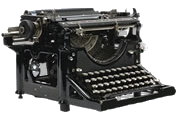Training Marines in San Diego
(Leatherneck Magazine, 1943)
Originally published in the Stars & Stripes of the U.S. Marine Corps, The Leatherneck, this is an interesting eight page article illustrated with fifteen photographs regarding the dramatic growth in that institution that took place in the immediate aftermath of the Pearl Harbor attack.
Click here to read a CLICK MAGAZINE article about the Marines of W.W. II.
Articles about the W.W. I Marines can be read HERE…
Read what the U.S. Army psychologists had to say about courage in war.
Read what the editors of YANK MAGAZINE thought about the Marine Corps Magazine, LEATHERNECK…
Read about the Women Marines of W.W. II HERE.
